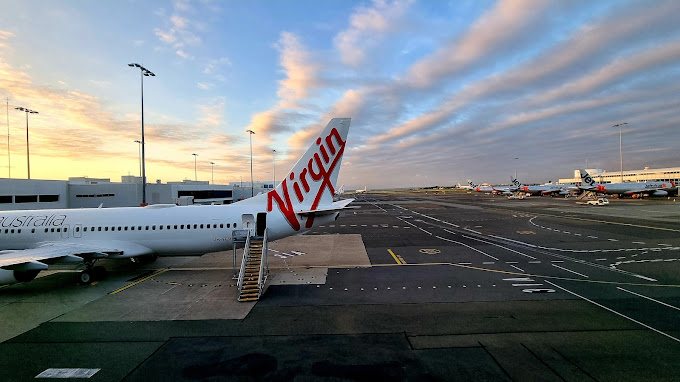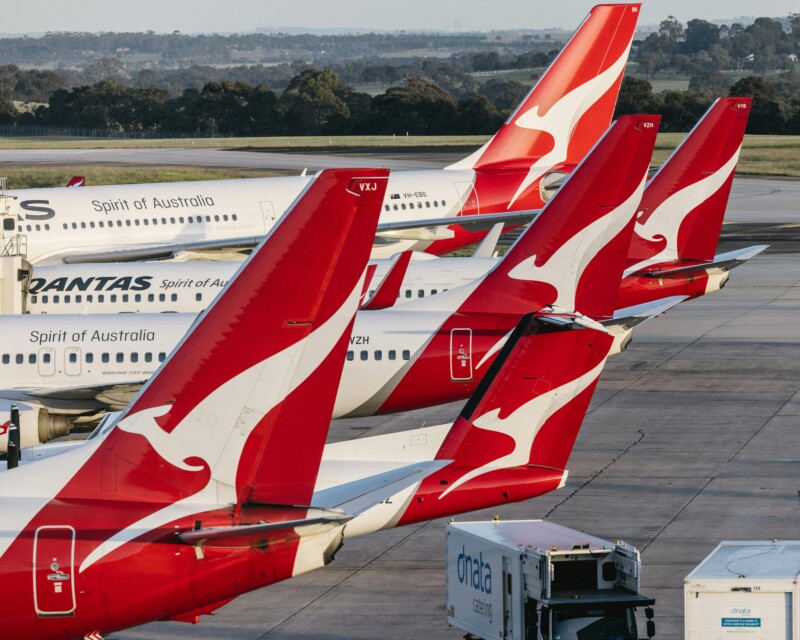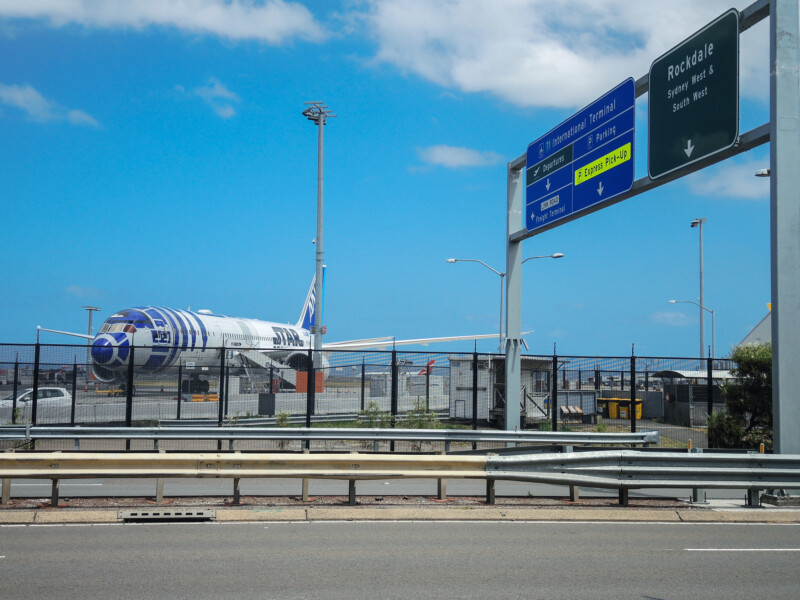Navigating Sydney Kingsford Smith Airport can be straightforward if you know the key differences between its terminals. When travelling domestically, you’ll primarily encounter Terminal 2 (T2) and Terminal 3 (T3). T2 is the largest domestic terminal in Australia, catering to airlines like Virgin, Jetstar, Tiger, and Regional Express. It’s a bustling hub that handles a significant portion of the domestic traffic, equipped with modern amenities to ensure a smooth travel experience.
In contrast, T3 is dedicated exclusively to Qantas and QantasLink flights. The terminals face each other, separated by a car park, making transfers relatively easy and quick. You can take an escalator down to the train station, walk through the concourse, and be at the other terminal in just a few minutes. This setup is especially convenient for Qantas passengers who might need to switch between domestic flights quickly.
Each terminal at Sydney Airport has its distinct vibe and set of facilities tailored to meet the needs of its respective airlines and passengers. Understanding these differences not only helps in smoother navigation but also ensures you make the most of the services and conveniences offered at each terminal. Whether you’re a frequent flyer or a first-time visitor, knowing what to expect at T2 and T3 can enhance your travel experience significantly.
Table of Contents
Overview of Sydney Airport Terminals

Sydney Airport is a major international and domestic hub. It comprises three main terminals: the International Terminal (T1) and two Domestic Terminals (T2 and T3), each catering to different types of travel and airlines.
Terminal 1 – International Terminal
Terminal 1 (T1) serves international flights and is the gateway to global destinations. Located in a separate area from the domestic terminals, T1 offers a wide range of facilities aimed at enhancing the travel experience.
Among its features are duty-free shops, luxury brands, and various dining options. There are also lounges for different airlines, currency exchange services, and baggage storage. Security and passport control are stringent to comply with international regulations. Public transport options, including trains and buses, provide easy access to the terminal.
Terminal 2 – Domestic Terminal

Terminal 2 (T2) handles domestic flights and is a primary hub for airlines like Virgin Australia and Jetstar. It is conveniently connected to Terminal 3 and provides a range of facilities tailored for domestic travellers.
Services in T2 include airline lounges, cafés, shops, and ATMs. Accessible facilities are available throughout the terminal, ensuring a comfortable experience for all passengers. The T-Bus offers a free shuttle service between T1, T2, and T3, making it easy to transfer between flights. T2 is designed for efficiency, ensuring quick check-ins and short wait times.
Terminal 3 – Domestic Terminal

Terminal 3 (T3) is dedicated to Qantas and QantasLink domestic flights. This terminal features a variety of services aimed at catering to business and leisure travellers alike.
You’ll find extensive lounges, including the Qantas Club and Business Lounges, as well as numerous dining and shopping options. The terminal is designed for swift passenger flow, with self-service kiosks and streamlined security checks. T3’s proximity to T2 allows for quick transfers, and the T-Bus service helps passengers move between terminals efficiently.
Differences Between T2 and T3

Sydney Airport’s terminals T2 and T3 cater to different airlines and passenger needs. Each terminal offers distinct services, facilities, and operational hours, catering to a variety of travel preferences.
Airlines and Destinations
T2 primarily serves airlines such as Virgin Australia and Jetstar. You’ll find a mix of domestic and international flights departing from T2, giving you plenty of options.
T3 is dedicated exclusively to Qantas, focusing on domestic routes. If you’re flying Qantas within Australia, you’ll be using T3, which simplifies the check-in and boarding processes for frequent Qantas travellers.
Services and Facilities
T2 offers a wide array of services, including multiple check-in counters, baggage handling, and several dining and shopping options. Whether you need a quick bite or some last-minute shopping, T2 has you covered.
T3, tailored for Qantas passengers, features premium lounges, expedited check-in, and a variety of dining choices. It also offers convenient baggage services, making it a one-stop terminal for your domestic flight with Qantas.
Operational Hours
T2 operates around the clock, accommodating various domestic and international flight schedules. This makes it a convenient choice for early morning or late-night departures and arrivals.
T3, on the other hand, operates based on Qantas’s domestic flight schedule. It’s essential to check Qantas’s timetable for exact opening hours if you’re planning to use T3 to ensure smooth travel arrangements.
Transportation and Connectivity

Navigating between T2 and T3 at Sydney Airport is straightforward, with multiple transport options that cater to different needs. These include transfers, public transport, and private vehicle alternatives.
Airport Transfers
Airport transfers include the T-Bus Shuttle, a complimentary service that runs every 30 minutes. It takes approximately 10 minutes to travel between terminals T1 and T2/T3. Another option is the Airport Link Train Service, which connects T1 International with T2 and T3 Domestic terminals. This train service operates frequently from 5am to midnight and accepts Opal cards for payment, ranging from $7.30 to $8.50.
For airlines like Qantas and Virgin, some selected connecting customers can avail of free transfers, which can be quite convenient. This significantly adds to the ease of moving between terminals without incurring additional costs or delays.
Public Transport Options
For those preferring public transport, several convenient options are available. The Airport Link Train Service is a notable one, providing quick and efficient transfers between terminals with a travel time of just 2 minutes. Contactless payment methods, including debit or credit cards and smart devices, are accepted.
There’s also the 420 bus service, which stops at both T1 and T3, with fares set at $1.60 off-peak and $3.20 during peak hours. The bus service is cost-effective and accessible, making it a practical choice for budget-conscious travellers.
Private Vehicles and Rideshare
Using private vehicles or rideshare services such as Uber provides another layer of convenience, particularly for those carrying heavy luggage or travelling with a group. Taxis are readily available, with fares between $17.00 and $22.00 for a 10-minute ride between terminals. This option offers direct and stress-free transfers without waiting.
For those driving, Sydney Airport has ample parking facilities, though parking fees apply. This can be a suitable choice for extended stays or for those living locally. Rideshare services like Uber offer a cashless, hassle-free alternative to taxis, ensuring safe and quick transfers within the airport precinct.
By considering these transportation and connectivity options, travellers can choose what best suits their needs and preferences, ensuring a smooth and efficient journey between terminals at Sydney Airport.
Airport Amenities and Retail Options

T2 and T3 at Sydney Airport offer a range of amenities and retail options designed to enhance your travel experience. From stylish shops to diverse dining choices and valuable additional services, both terminals cater to various passenger needs.
Shopping Experience
T2 and T3 terminals come with a variety of retail outlets that feature an array of products to suit your needs. T2 is known for its trendy and hip selection of stores, offering everything from high-fashion labels to quirky stationery.
T3, primarily used by Qantas, also houses chic and elegant shops. Whether you need last-minute travel essentials or want to indulge in a bit of shopping therapy, these terminals offer ample retail options. The design and layout make it easy to navigate between stores, ensuring a pleasant shopping experience.
Food and Beverage
When it comes to food and beverages, T2 and T3 boast diverse options from quick bites to sit-down meals. T2 is particularly buzzing with a variety of eateries that cater to all culinary tastes. You can find fast food joints, refreshing coffee spots, and gourmet restaurants.
T3 provides a mix of casual dining and upscale culinary experiences. Whether you’re grabbing a quick snack before your flight or settling down for a meal, both terminals ensure you won’t be short of options. The meticulously designed dining areas provide comfort and convenience, perfect for relaxing during your wait.
Additional Services
Each terminal offers a host of additional services to ensure a smooth travel experience. At T2, you will find more seating and charging stations to keep your devices juiced up. T2 also boasts award-winning contemporary tenancies that enhance passenger comfort.
T3 features Google Maps Indoor Live View to help you navigate to gates, dining options, and other amenities. Complimentary services like the T-Bus Shuttle connect the domestic and international terminals. Both terminals provide free lost property services, and numerous ATMs are available for your convenience. The check-in counters and security screenings are well-organized, ensuring efficient processing times.
Traveller Information and Facilities

T2 and T3 at Sydney Airport both offer a variety of facilities to ensure a smooth journey. The following sections cover key areas such as check-in and security processes, accessibility and comfort amenities, and essential travel guidelines.
Check-In and Security
The check-in process at T2 and T3 is streamlined for efficiency. At both terminals, you can find self-service kiosks and traditional check-in counters. T2 hosts airlines like Virgin, Jetstar, and Tiger, whereas T3 is primarily for Qantas domestic flights.
Security screening is thorough to ensure safety. You must follow standard procedures, including removing laptops from bags and passing through metal detectors. Peak hours can lead to longer wait times, so arriving at the airport at least two hours before your flight is advisable.
Baggage services offer convenient options for checked and carry-on luggage. Ensure your bags comply with weight and size restrictions to avoid additional fees. There are also designated areas for priority pick-up and drop-off for a quicker transit experience.
Accessibility and Comfort
Sydney Airport places a strong emphasis on accessibility and comfort at both terminals. T2 includes various facilities such as accessible bathrooms, designated seating areas, and clear signage for easy navigation. T3 is equipped with similar amenities, including facilities for those with special needs and mobility assistance services.
Comfort-focused facilities include showers, lounges, and free Wi-Fi. T3 offers exclusive Qantas Club lounges with additional services like complimentary refreshments and comfortable seating. T2 also has lounges for eligible passengers, including Virgin Australia’s lounge, providing a relaxing space before your flight.
Parking options are plentiful, with short-term and long-term parking facilities available. Specially marked bays are provided for disabled parking close to terminal entrances, enhancing convenience for travellers with disabilities.
Travel Guidelines
Travelling through T2 and T3 requires adherence to specific guidelines. Allocate sufficient travel time, especially during peak hours, to navigate through check-in, baggage drop, and security screenings efficiently. Off-peak times might result in shorter queues and quicker processes.
Sydney Airport offers a seamless transfer service between terminals for eligible passengers. The T-Bus shuttle operates regularly, free for selected connecting customers, ensuring a hassle-free transfer experience. Those not eligible will need to pay a nominal fare for the service.
Remember to review and adhere to baggage and security regulations. Familiarising yourself with these guidelines beforehand can save time and reduce stress. Utilize airport ambassadors available throughout both terminals for assistance and guidance. Arrive at the airport well-prepared to ensure a smooth journey.
Leave a Reply